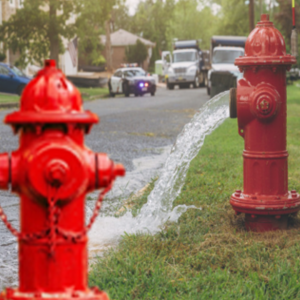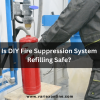![]()
Fire Immuniser
+91-7829629111
Email: info@variex.in
Varistor Technologies Pvt. Ltd.
Block-1, First Floor, Ardente Office One, Hoodi Circle, ITPL Main Road, Bengaluru, Karnataka 560048, IN
How To Install Fire Hydrant System
Installing a fire hydrant system is a crucial aspect of fire safety infrastructure for buildings, industrial facilities, and communities. These systems provide firefighters with a reliable water supply to combat fires efficiently. Proper installation is essential to ensure the system functions effectively during emergencies. Below are the essential steps involved in installing a fire hydrant system.
1. Preliminary Planning:
- Conduct a thorough assessment of the property or area to determine the optimal locations for fire hydrants. Consider factors such as building layout, water source accessibility, and fire department requirements.
- Obtain necessary permits and approvals from local authorities and regulatory agencies before commencing installation.
2. Design and Layout:
- Develop a detailed design and layout plan for the fire hydrant system, incorporating the location of hydrants, underground piping, valves, and water mains.
- Ensure compliance with relevant codes, standards, and regulations governing fire hydrant installation, such as NFPA 24 and local building codes.
3. Water Supply Connection:
- Identify a suitable water supply source, such as a municipal water main or a dedicated fire protection water tank.
- Install a fire department connection (FDC) to facilitate the connection between the hydrant system and the water supply source. The FDC typically includes valves, piping, and fittings.
4. Excavation and Installation of Underground Piping:
- Excavate trenches for laying underground piping to connect the hydrants to the water supply source.
- Install ductile iron or PVC piping in accordance with design specifications and local regulations, ensuring proper alignment and support.
5. Hydrant Installation:
- Position fire hydrants at designated locations along streets, parking lots, or building perimeters, ensuring they are easily accessible to firefighting personnel.
- Excavate holes for hydrant bases and anchor them securely using concrete encasements or hydrant mounting pads.
- Connect the hydrants to the underground piping network using appropriate fittings and valves.
6. Valve Installation and Testing:
- Install isolation valves, gate valves, and other necessary control devices at strategic points along the piping network to control water flow and isolate sections for maintenance.
- Conduct pressure tests to ensure the integrity of the piping system and verify proper operation of valves and fittings.
7. Backfilling and Surface Restoration:
- Backfill excavated trenches with suitable materials, compacting them to prevent settling or damage to the piping.
- Restore the surface area, such as sidewalks, roads, or landscaping, to its original condition or as per local regulations and aesthetic considerations.
8. Signage and Marking:
- Install visible signage and markings to indicate the presence and location of fire hydrants, ensuring they are easily identifiable to emergency responders and maintenance personnel.
- Paint hydrants and signage in accordance with standardized color codes to denote water flow capacity and other relevant information.
9. Inspection and Commissioning:
- Schedule a final inspection with local authorities or fire department officials to ensure compliance with regulatory requirements and confirm the proper installation and operation of the fire hydrant system.
- Commission the system and conduct flow tests to verify water flow rates and pressure levels at each hydrant.
10. Ongoing Maintenance and Monitoring:
- Establish a regular maintenance schedule to inspect and maintain the fire hydrant system, including flushing the hydrants, lubricating valves, and repairing any leaks or damage.
- Keep accurate records of maintenance activities, inspections, and testing to ensure the system remains in optimal condition and complies with regulatory standards.
Installing a fire hydrant system requires careful planning, coordination, and adherence to regulatory requirements to ensure effective fire protection capabilities. By following these essential steps and best practices, property owners, facility managers, and fire protection professionals can install reliable and robust fire hydrant systems to safeguard lives and property from the devastating impact of fires.
Frequently Asked Questions
A fire hydrant system consists of a network of hydrants, underground piping, valves, and connections that provide firefighters with access to water for extinguishing fires. It is essential for ensuring adequate water supply during fire emergencies, facilitating prompt and effective firefighting operations.
Property owners, developers, or facility managers are typically responsible for installing fire hydrant systems on their premises. Installation must comply with local building codes, fire safety regulations, and standards established by authorities having jurisdiction (AHJs).
Key factors to consider include property layout, water supply availability, fire department requirements, regulatory compliance, and accessibility for firefighting personnel and vehicles.
Yes, obtaining permits and approvals from local authorities and AHJs is necessary before installing a fire hydrant system. Compliance with building codes, zoning regulations, and fire safety standards is essential to ensure legal and regulatory requirements are met.
Fire hydrant locations are typically determined based on factors such as property size, building layout, street accessibility, water supply availability, and fire department recommendations. Hydrants should be strategically positioned for optimal coverage and accessibility.
Final Say
We at VariEx.in or Variexonline.com have mastered the art of designing, installing, inspecting, and fixing automatic sprinkler systems with the help of our in-house team, which is capable of delivering the fire sprinkler services you need, whether large or small and at affordable cost.
To schedule a fire sprinkler installation, or you think our services could benefit your commercial property, contact us online or give us a call at, 7829629111









